This former long-standing chemist’s became a pub in 1967. From 1992, it was called the Olde King and Castle. The ‘King’ refers to the bust of Edward VII above the entrance to the adjacent passageway, where there is an engraving of Windsor Castle.
Text about the history of The King and Castle.
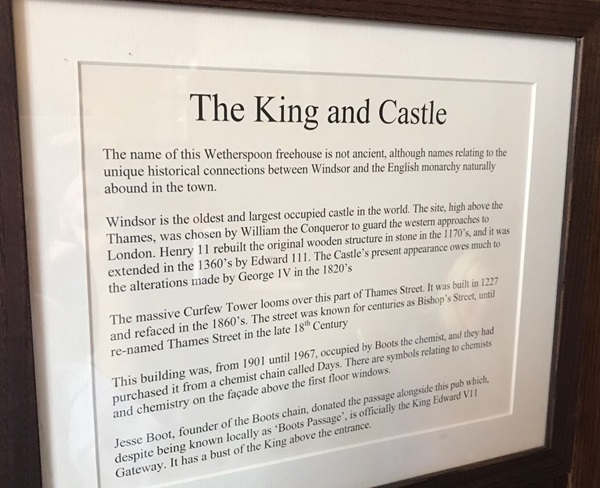
The text reads: The name of this Wetherspoon pub is not ancient, although names relating to the unique historical connections between Windsor and the English monarchy are naturally abound in the town.
Windsor is the oldest and largest occupied castle in the world. The site, high above the Thames, was chosen by William the Conqueror to guard the western approaches to London. Henry II rebuilt the original wooden structure in stone in the 1170s, and it was extended in the 1360s by Edward III. The castle’s present appearance owes much to the alterations made by George IV in the 1820s.
The massive Curfew Tower looms over this part of Thames Street. It was built in 1227 and refaced in the 1860s. The street was known for centuries as Bishop’s Street, until renamed Thames Street in the late 18th century.
This building was, from 1901 until 1967, occupied by Boots, and they had purchased it from a chemist chain called Days. There are symbols relating to chemists and chemistry of the façade above the first floor windows.
Jesse Boot, founder of the Boots chain, donated the passage alongside this pub which, despite being known locally as Boots Passage, is officially the King Edward Gateway. It has a bust of the King above the entrance.
Prints and text about the castle.
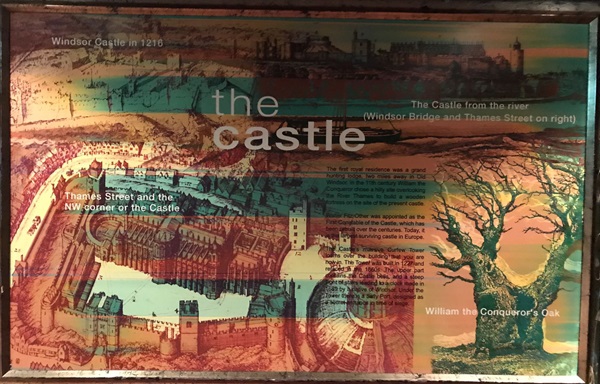
The text reads: The first royal residence was a grand hunting lodge, two miles away in Old Windsor. In the 11th century William the Conqueror chose a hilly site overlooking the River Thames to build a wooden fortress on the site of the present castle.
Walter Fitz Other was appointed as the first constable of the castle, which has been rebuilt over the centuries. Today, it is the largest surviving castle in Europe.
The castle’s massive Curfew Tower looms over the building that you are now in. The tower was built in 1227 and refaced in the 1860s. The upper part contains the castle bells, and a steep flight of stairs leading to a clock made in 1689 by a native of Windsor. Under the tower there is a Sally Port, designed as a secret entrance in time of siege.
Text about the castle and the kings.
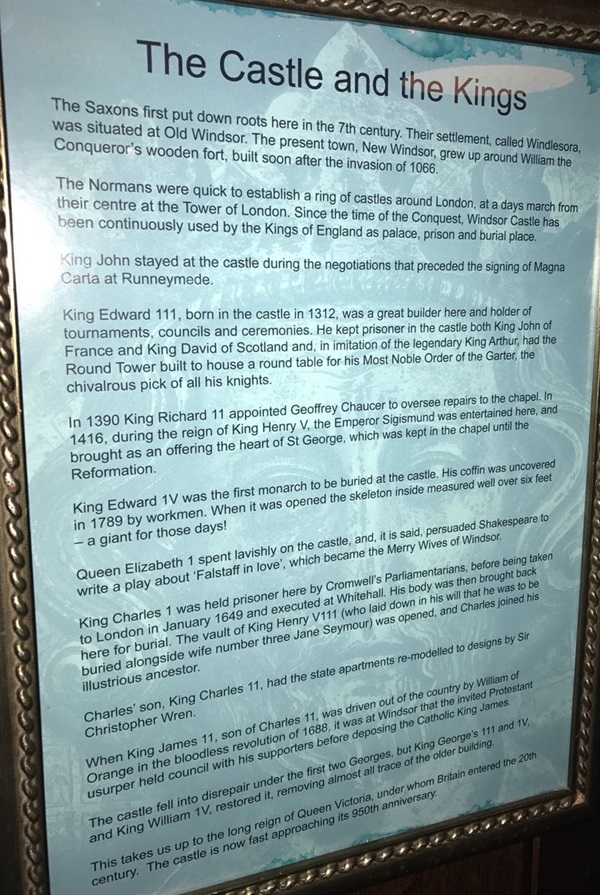
The text reads: The Saxons first put down roots here in the 7th century. Their settlement, called Windlesora, was situated at Old Windsor. The present town, New Windsor, grew up around William the Conqueror’s wooden fort, built soon after the invasion of 1066.
The Normans were quick to establish a ring of castles around London, at a day’s march from their centre at the Tower of London. Since the time of the Conquest, Windsor Castle has been continuously used by the kings of England as palace, prison and burial place.
King John stayed at the castle during the negotiations that preceded the signing of the Magna Carta at Runneymede.
King Edward III, born in the castle in 1312, was a great builder here and holder of tournaments, councils and ceremonies. He kept prisoner in the castle both King John of France and King David of Scotland and, in imitation of the legendary King Arthur, had the Round Tower built to house a round table for his Most Notable Order of the Garter, the chivalrous pick of all his knights.
In 1390 King Richard II appointed Geoffrye Chaucer to oversee repairs to the chapel. In 1416, during the reign of King Henry V, the Emperor Sigismund was entertained here, and brought as an offering the heart of St George, which was kept in the chapel until the Reformation.
King Edward IV was the first monarch to be buried at the castle. His coffin was uncovered in 1789 by workmen. When it was opened the skeleton inside measured well over six feet – a giant for those days!
Queen Elizabeth I spent lavishly on the castle, and it is said, persuaded Shakespeare to write a play about Falstaff in love, which became the Merry Wives of Windsor.
King Charles I was held prisoner here by Cromwell’s Parliamentarians, before being taken to London in January 1649 and executed at Whitehall. His body was then brought back here for burial. The vault of King Henry VIII (who laid down in his will that he was to be buried alongside wife number three Jane Seymour) was opened, and Charles joined his illustrious ancestor.
Charles’ son, King Charles II, had the state apartments remodelled to designs by Sir Christopher Wren.
When King James II, son of Charles II, was driven out of the country by William of Orange in the bloodless revolution of 1688, it was at Windsor that the invited Protestant usurper held council with his supporters before deposing the Catholic King James.
The castle fell into disrepair under the first two Georges, but King George III and IV, and King William IV, restored it, removing almost all trace of the older building.
This takes us up to the long reign of Queen Victoria, under whom Britain entered the 10th century. The castle is now fast approaching its 950th anniversary.
A print of the curfew tower.
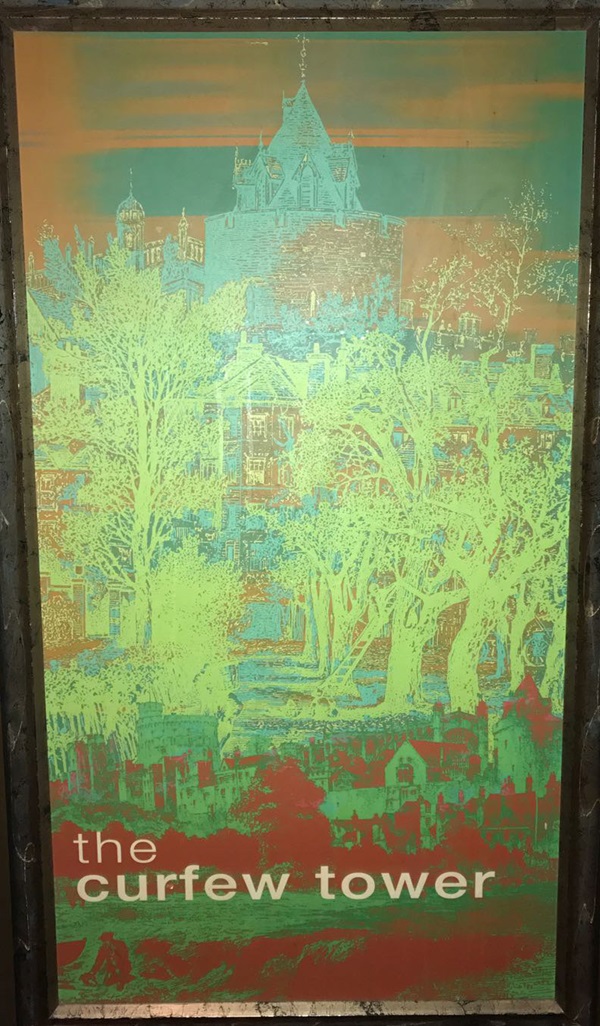
An English Heritage blue plaque.
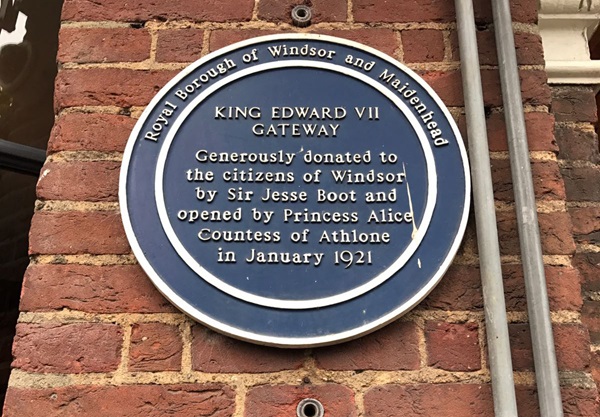
The plaque reads: King Edward VII Gateway
Generously donated to the citizens of Windsor by Sir Jesse Boot and opened by Princess Alice Countess of Athlone in January 1921.
The bust of Edward VII above the entrance, along with other engravings.
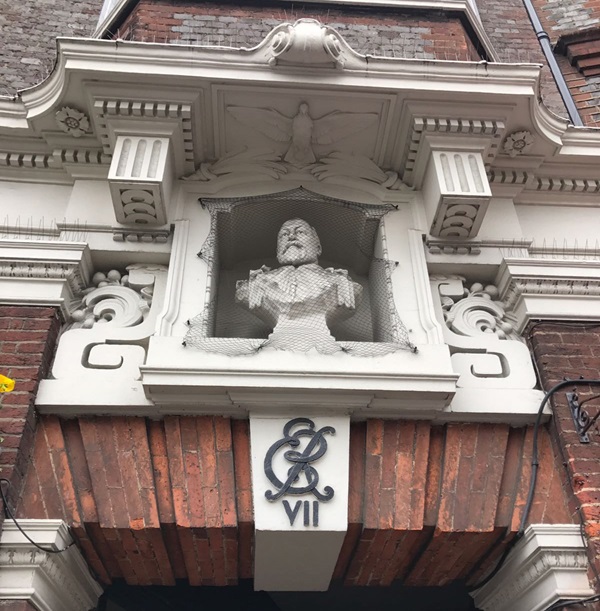
A B symbol relating to Boots the Chemists.
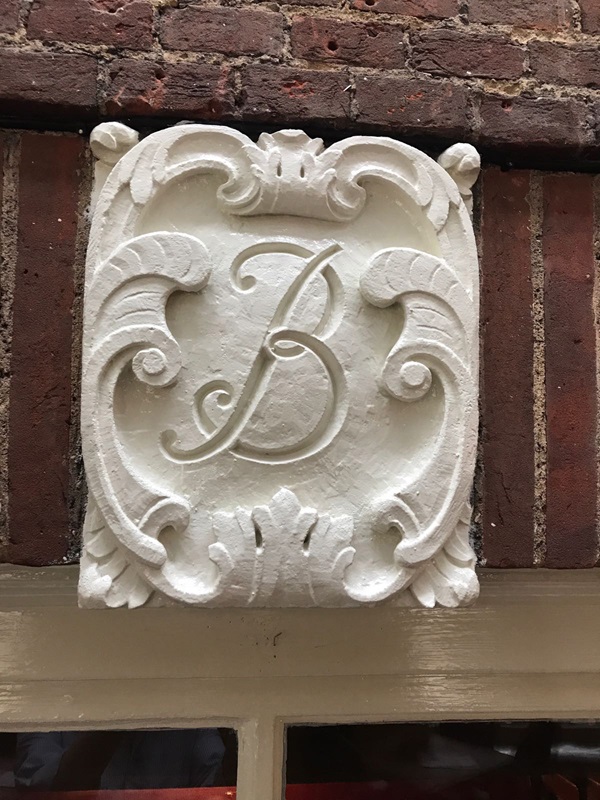
External photograph of the building – main entrance.
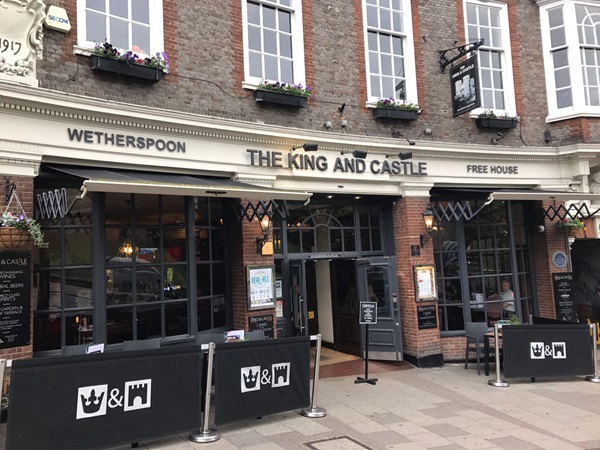
If you have information on the history of this pub, then we’d like you to share it with us. Please e-mail all information to: pubhistories@jdwetherspoon.co.uk